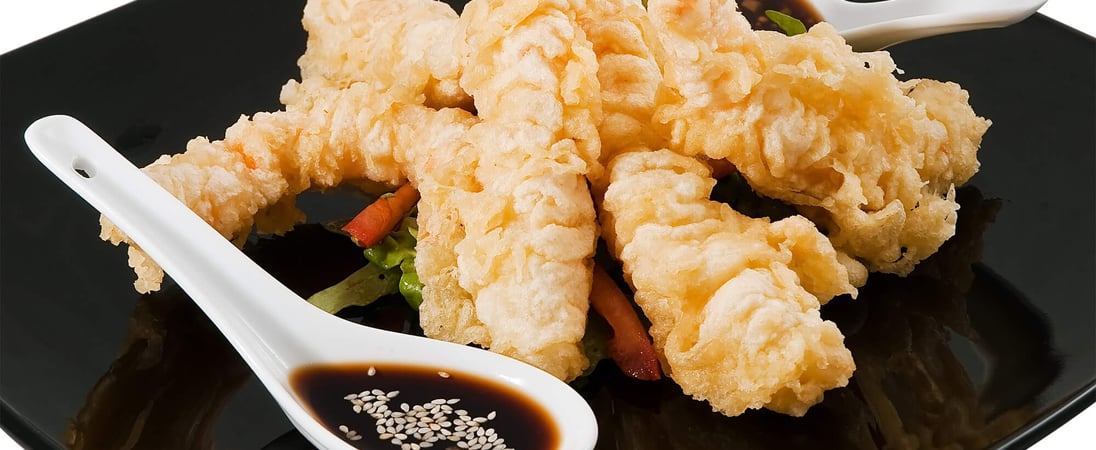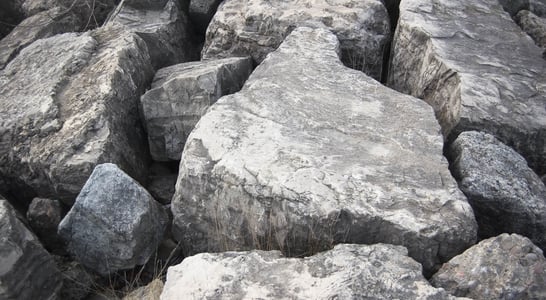
National Tempura Day
Batter and deep-fry a wide range of foods, from prawns to vegetables, and pair with Japanese staples like donburi or soba for some delicious dining.
Tempura is a deep-fried dish that the Japanese have made for centuries. When did it originate? Find out through the history of National Tempura Day!
How to Celebrate National Tempura Day
Celebrating National Tempura Day is easy! Get invovled with a few different ideas, includling some of these:
Cook with Tempura
Gather up the ingredients necessary to create a tempura, be it a homemade recipe or one you found online, and make the dish to serve it with family as a happy dinner meal.
You could decide to have tempura prawns or starter or you could opt for a main dish that incorporates tempura, such as the ones we mentioned earlier.
The great thing about this batter is that it is highly versatile and so it can be teamed with a wide range of seafood, vegetables, and meat.
This means that you can have a lot of fun experimenting with different ingredients. Why not have a tempura cook-off with your friends? Or, you could host a Japanese-inspired dinner party?
Eat Tempura with Friends
Why not get some of your friends around for afternoon tea Japanese style? In Japan, tea ceremonies have been popular for many years.
Combine this with some delicious tempura dishes for everyone to eat, and you’ve got the perfect lunch-time event. After all, it is always fun to do something a bit different, isn’t it?
Enjoy Matcha with Tempura
The tea that is famous in Japan is pure Matcha green tea. We’re sure you may have even seen Matcha tea or Matcha lattes in your local coffee shop!
Matcha comes in many different forms and grades. It is important to be aware of this when purchasing, as you don’t want to end up selecting the wrong product. Generally speaking, you have two key options to select from when buying Matcha – ceremonial Matcha and cooking grade Matchas.
No matter whether you are going to host a traditional Japanese tea ceremony with your friends or an evening of fine dining, you will need to decide what tempura dishes you are going to create. The great news is that there are so many different options for you to choose from!
Try Different Varieties of Tempura
Let’s go through some of the most popular. If you’re looking for a veggie dish, eggplant tempura is a great choice. This is known as Nasu. Or, how about Ebi?
This is shrimp tempura, and it is delicious! It is typically used as a topping for udon or soba noodles, yet it can also be enjoyed on its own. Don’t confuse this with Ebi Furai; this is another type of fish, yet it is deep fried with panko batter, which is a lot heavier.
Some other options include tempura shiitake mushrooms, Ika, which is squid tempura, and Hotate, which is tempura scallops.
If you are feeling really adventurous, you may want to consider Anago, which is salt-water eel. They have a sweet taste and a soft texture.
Learn About National Tempura Day
On National Tempura Day, everyone is encouraged to enjoy any sort of dish that has been made with tempura batter. This is a Japanese fare, with most people delighting in delicious tempura prawns on this date!
However, there are many things that can be deep-fried in tempura batter. Seafood and vegetables are the most popular, yet there’s nothing stopping you from having tempura chicken. There are plenty of unique concoctions to come up with. Deep-fried Mars bars are popular, so what about a tempura version?
Tempura is a traditional Japanese dish. It was introduced in the 16th century by the Portuguese that were living in Nagasaki at the time. They used fritter-cooking to achieve the light batter.
The batter typically consists of soft wheat flour, for example, all-purpose flour, pastry flour, or cake flour, which is combined with iced water. Some people prefer to use sparkling water to keep the batter light.
A lot of people will also add spices, oil, starch, baking powder or baking soda, and/or eggs, especially the egg yolk. Traditionally, this batter is mixed in small batches.
Chopsticks are used to mix the batter, and it is only mixed minimally, i.e. for a few seconds. Any lumps are left in the mixture, and this – along with the cold temperature – is how the crisp and unique fluffy tempura structure is created when cooking.
Cooked tempura pieces tend to be either salted and eaten as they are or they are presented with a dipping sauce. Tentsuyu sauce is the most common sauce to enjoy with this batter.
A lot of people serve it with grated daikon, which is a mild-flavored winter radish, and they eat it straight after it has been fried. You will also find that tempura is typically found in udon soup or bowls of soba in Japan, typically in the form of a fritter, shiso leaf, or shrimp.
It is also not uncommon for tempura to be used in combination with other foods. So, if you want to cook a tempura-inspired meal for National Tempura Day, there are plenty of main dishes for you to consider.
History of National Tempura Day
Tempura is made up of either seafood or vegetables that are battered, deep-fried, and enjoyed by millions of people across the nation.
Portuguese Jesuit missionaries introduced the recipe for tempura to Japan during the sixteenth century (around 1549). It is believed that Portuguese Jesuit Tokugawa Isyasu, founder and first shogun of the Tokugawa shogunate of Japan, loved tempura.
Since the Genroku era (September 1688 – March 1704) tempura was originally a very popular food that was eaten at street vendors called yatai.
Today, chefs all over the world include tempura dishes on their menus using a wide variety of different batters and ingredients including the non-traditional broccoli, zucchini, and asparagus as well as dry fruits. Some meats, usually chicken and cheeses, are known to be served tempura-style in some American restaurants.
For sushi lovers, a more recent variation of tempura sushi has the entire piece of sushi dipped in batter and tempura-fried.
The word “tempura” comes from the word “tempora”, a Latin word meaning “times”, “time period” used by both Spanish and Portuguese missionaries to refer to the Lenten period or Ember Days.
The idea that the word “tempura” may have been derived from the Portuguese noun tempero, meaning a condiment or seasoning of any kind, or from the verb temperar, meaning “to season” has not been substantiated.
The term “tempura” is thought to have gained popularity in southern Japan; it became widely used to refer to any sort of food prepared using hot oil, including some already existing Japanese foods.
Today, the word “tempura” is also commonly used to refer to satsuma age, a fried fish cake that is made without batter.
In Bangladesh, the blossoms of pumpkins or marrows are often deep-fried with a gram of rice flour spice mix, creating a Bengali style tempura known as kumro ful bhaja.
National Tempura Day seeks to show honor and appreciation for this unique and delicious style of cooking!
National Tempura Day FAQs
How did the Japanese modify tempura after adapting it from Portuguese cuisine?
Japanese chefs refined the technique by using a much lighter batter, which enhanced the delicate flavor and texture of seasonal vegetables and seafood.
They also began using sesame oil, which imparted a rich aroma and crispiness, unlike anything from the Portuguese recipe.
This combination of changes helped tempura become uniquely Japanese, evolving it from a borrowed technique into a revered culinary art.
Why do many traditional tempura restaurants use sesame oil for frying?
Traditionally, tempura was fried in sesame oil, which is known for its high smoking point and nutty aroma, which enhances the dish’s flavor.
Some tempura shops still use it today because it produces a light, crisp coating, making the batter fluffy and delicately crunchy.
Are there regional variations of tempura in Japan?
Yes, tempura has regional twists. For instance, Kyoto’s “Kyo-tempura” is lighter and refined, often featuring seasonal vegetables to reflect Kyoto’s culinary elegance.
In coastal Nagasaki, “Deage” tempura is popular, emphasizing local fish and a thicker batter style.
What unusual ingredients have been used in tempura?
Beyond common vegetables and seafood, creative cooks have tempura-fried everything from shiso leaves to umeboshi (pickled plum).
Today, some fusion restaurants even offer tempura-fried avocado, cheese, and more exotic ingredients like sea urchin roe.
Is tempura meant to be a snack or a main meal?
Initially, tempura was considered a snack or street food sold by vendors in Edo (modern Tokyo) in the 17th century.
Over time, it became a full meal, often served with rice or noodles, reflecting its popularity and evolving status in Japanese dining culture.
Why is tempura traditionally served immediately after frying rather than prepared in advance?
Tempura’s light, crispy texture is best enjoyed fresh, right out of the fryer. The batter is designed to stay crisp and delicate, but only for a short time.
If it sits too long, moisture from the ingredients can seep into the batter, making it soggy and compromising its signature crunch.
For this reason, traditional tempura chefs serve each piece as soon as it’s ready, ensuring diners experience it at peak quality.
This practice reflects the Japanese emphasis on serving food at its ideal moment, adding an element of precision to the dining experience.
How do tempura chefs maintain a light, crispy texture?
Expert tempura chefs use ice-cold water in the batter to slow gluten formation, keeping it light and airy.
They also fry in small batches and at precise temperatures to avoid soggy, oily textures. These details preserve the tempura’s crispiness and delicate flavor.
Why is Tempura Day celebrated on January 7?
While the exact origin of Tempura Day isn’t documented, the January 7 date aligns with the post-holiday season in Japan when people enjoy comfort foods.
Celebrating tempura—a warm, satisfying dish—adds a delightful event in Japan’s colder month.
What unique ways do people celebrate Tempura Day around the world?
In the U.S., people experiment with non-traditional tempura ingredients, like frying pickles, cheese curds, or even chocolate bars.
In Japan, some restaurants offer special tempura menus or pair tempura with unique dipping sauces, like matcha salt or yuzu-flavored salt, for the occasion.
What is “tenkasu,” and how is it used in Japanese cooking?
“Tenkasu” are the crispy batter bits left after frying tempura. These tiny crumbs are a prized ingredient, often sprinkled on dishes like udon and okonomiyaki for added texture and flavor.
Some even enjoy tenkasu as a topping for rice or in miso soup.
Also on ...
View all holidaysNational Bobblehead Day
Those fun, oversized head-bobbing collectibles that make any shelf or desk instantly more entertaining with their quirky, caricatured charm.
Harlem Globetrotter’s Day
Those basketball entertainers with jaw-dropping skills, comedic antics, and dazzling tricks — they turn the court into a stage of sheer amusement.
Old Rock Day
Discover the beauty and history of the earth with these timeless treasures that offer a glimpse into the past and a connection to the natural world.




